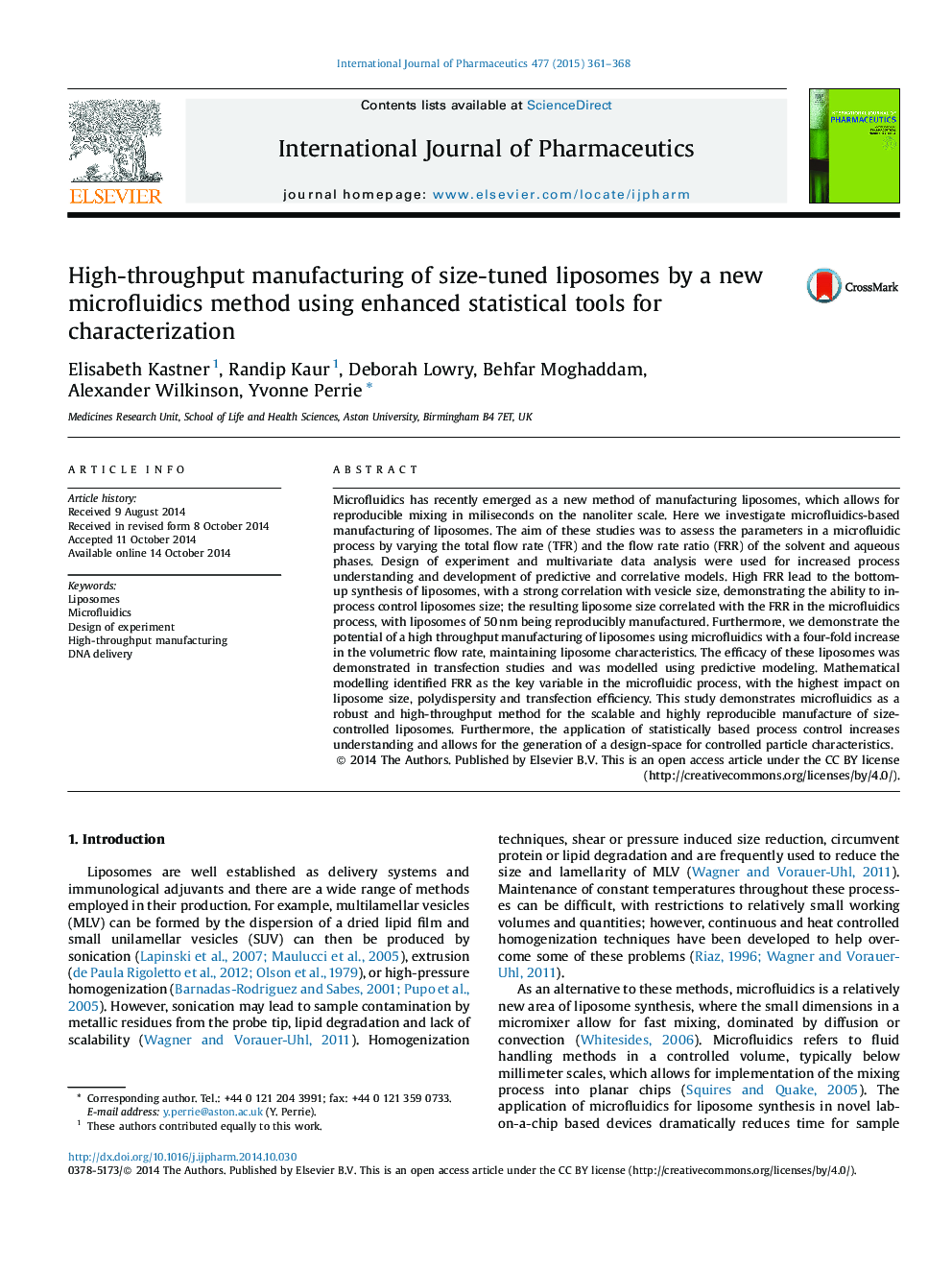| Article ID | Journal | Published Year | Pages | File Type |
|---|---|---|---|---|
| 5819074 | International Journal of Pharmaceutics | 2014 | 8 Pages |
Microfluidics has recently emerged as a new method of manufacturing liposomes, which allows for reproducible mixing in miliseconds on the nanoliter scale. Here we investigate microfluidics-based manufacturing of liposomes. The aim of these studies was to assess the parameters in a microfluidic process by varying the total flow rate (TFR) and the flow rate ratio (FRR) of the solvent and aqueous phases. Design of experiment and multivariate data analysis were used for increased process understanding and development of predictive and correlative models. High FRR lead to the bottom-up synthesis of liposomes, with a strong correlation with vesicle size, demonstrating the ability to in-process control liposomes size; the resulting liposome size correlated with the FRR in the microfluidics process, with liposomes of 50Â nm being reproducibly manufactured. Furthermore, we demonstrate the potential of a high throughput manufacturing of liposomes using microfluidics with a four-fold increase in the volumetric flow rate, maintaining liposome characteristics. The efficacy of these liposomes was demonstrated in transfection studies and was modelled using predictive modeling. Mathematical modelling identified FRR as the key variable in the microfluidic process, with the highest impact on liposome size, polydispersity and transfection efficiency. This study demonstrates microfluidics as a robust and high-throughput method for the scalable and highly reproducible manufacture of size-controlled liposomes. Furthermore, the application of statistically based process control increases understanding and allows for the generation of a design-space for controlled particle characteristics.
Graphical abstractDownload high-res image (209KB)Download full-size image
